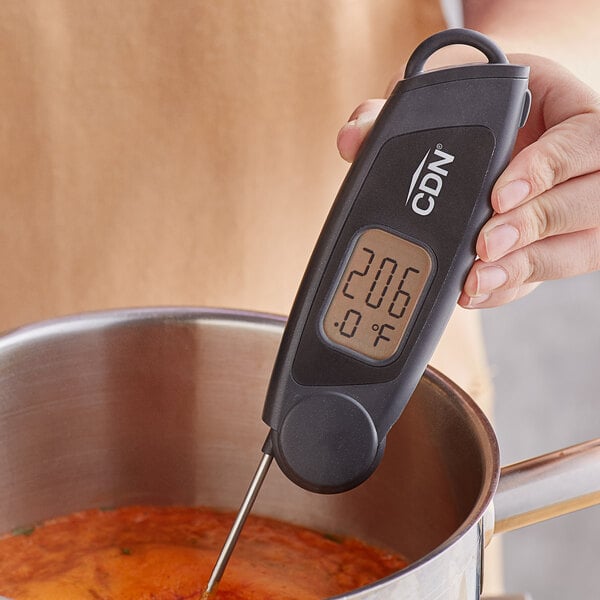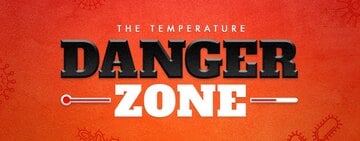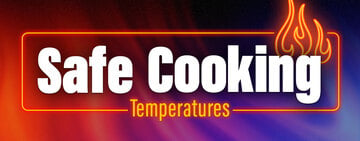
Calibrating a thermometer is a crucial step in ensuring the accuracy of temperature readings in commercial settings such as restaurants and food processing facilities. By following the correct calibration procedures, businesses can trust that their thermometers provide reliable temperature measurements, helping to maintain food safety guidelines, ensuring product quality, and complying with industry regulations. Below, we will discuss the importance of calibrating thermometers and the different methods you can use for accurate calibration.
Shop All Food Thermometers & TimersThermometer Calibration Video
Watch the video below for a breakdown of how to calibrate a thermometer
How to Calibrate a Thermometer with Ice
One common and easy method to calibrate any type of thermometer is by using ice water. Ice water has a known temperature of 32 degrees Fahrenheit when a mixture of ice and water is in thermal equilibrium. This process is quick, cost-effective, and can be done regularly to maintain the accuracy of your thermometer.

- Fill Container with Ice - Start by filling a large container with a mix of ice and water. The ice should be finely crushed or in small cubes to create a slushy consistency. Stir the mixture to create an even temperature throughout.
- Insert the Thermometer Probe - Place the thermometer in the ice water, making sure it is submerged at least 2 inches deep. Hold the thermometer in the ice water for a few minutes, allowing it to stabilize and reach the same temperature as the surrounding water.
- Check the Reading - Your thermometer should register at or very close to 32 degrees Fahrenheit, the freezing point of water. If the thermometer does not read 32 degrees Fahrenheit, you will need to adjust it accordingly.
- Adjust Your Thermometer - Most thermometers have a calibration nut or screw that can be adjusted to correct any discrepancies. Refer to the manufacturer's instructions on how to make adjustments specific to your thermometer model. Once adjusted, recheck the thermometer in the ice water to see if it now reads accurately.
How to Calibrate a Thermometer with Boiling Water
Calibrating your thermometer with boiling water is another simple yet effective way to maintain the accuracy of your temperature readings. As water boils at a consistent temperature of 212 degrees Fahrenheit, it can easily be used to test and recalibrate your thermometer.

- Bring Water to a Boil - Start by filling a pot with distilled water and bringing it to a rolling boil. Once the water reaches a steady boil, insert the calibrated reference thermometer into the water, making sure it is immersed at least 2 inches deep and not touching the bottom or sides of the pot.
- Insert Thermometer - Next, take the thermometer you wish to calibrate and insert it into the boiling water. Allow the thermometer a few minutes to stabilize and reach the correct temperature.
- Check the Reading - Your thermometer should register at or very close to 212 degrees Fahrenheit, the boiling point of water. If the thermometer does not read 212 degrees Fahrenheit, you will need to adjust it accordingly.
- Adjust Your Thermometer - If your thermometer is adjustable, you can then proceed to adjust it based on the variance observed. Follow the manufacturer's instructions for adjusting the calibration settings. Once adjusted, repeat the process of testing the thermometer in boiling water to confirm that it now reads accurately.
How Often Should a Food Thermometer Be Calibrated?
The frequency at which you should calibrate your food thermometer depends on how often you use it and the type of thermometer you have. Here are some general guidelines to help you determine how often your food thermometer should be calibrated:

- Daily Calibration - For thermometers that are used continuously throughout the day or are exposed to extreme temperature changes, daily calibration is recommended. This is common in busy commercial kitchens where accuracy is essential for food safety and quality control.
- After Impact or Exposure to Extreme Conditions - It is important to calibrate your food thermometer after any impact or exposure to extreme conditions, such as dropping the thermometer or subjecting it to high heat. These events can affect the accuracy of the thermometer and require immediate calibration to ensure reliable results.
- Large Temperature Swings - If you are frequently switching between very different temperature ranges, such as going from measuring cold storage temperatures to cooking temperatures, you should recalibrate your thermometer to ensure accurate readings.
What Is a Thermometer Calibration Kit?
These kits typically include a variety of components that allow you to calibrate your thermometers for accurate temperature readings. One key component of a thermometer calibration kit is a calibration bath or block. This container is used to create a stable and precise temperature environment for calibrating thermometers. In addition to the calibration bath or block, calibration kits often include reference thermometers. By comparing the readings of your thermometer to the readings of the reference thermometer, you can make necessary adjustments for accurate readings.
How to Use a Thermometer Calibration Kit
A thermometer calibration kit includes a reference thermometer. This thermometer is calibrated to a high level of accuracy and serves as a standard for comparison for the thermometer you wish to calibrate.
- Gather Your Equipment - Start by assembling your thermometer calibration kit, which includes a reference thermometer that is already calibrated.
- Prepare the Ice Water - Fill a container with ice and water, ensuring that the water is ice-cold but not frozen. Stir the water well to distribute the cold temperature evenly.
- Immerse Thermometers - Submerge both the thermometer being tested and the reference thermometer into the ice water, making sure they are fully immersed but not touching the sides or bottom of the container.
- Wait for Stabilization - Allow the thermometers to sit in the ice water for a few minutes until the readings stabilize. The temperature on the reference thermometer should read 32 degrees Fahrenheit.
- Adjust if Necessary - If the thermometer being tested does not read 32 degrees Fahrenheit, use the calibration tool provided with the kit to adjust the thermometer accordingly. Follow the manufacturer's instructions for calibration adjustments.
Regular calibration is essential to ensure the safety of your customers and the quality of your food products. By taking the time to calibrate your thermometer properly, you can maintain compliance with food safety regulations and prevent potential issues that could arise from inaccurate temperature measurements. Remember, a properly calibrated thermometer is a crucial tool in any commercial kitchen, helping you maintain the highest standards of food safety and quality.





